You are using an out of date browser. It may not display this or other websites correctly.
You should upgrade or use an alternative browser.
You should upgrade or use an alternative browser.
Essential The Official ESPN Insider Thread (ESPN+)
- Thread starter the cool
- Start date
More options
Who Replied?NFL draft 2021 rankings: Todd McShay's updated top 32 prospects in the class, risers and fallers
1. Trevor Lawrence, QB, Clemson*
HT: 6-foot-6 | WT: 220
Grade: 97 | Previous rank: 1
Lawrence is the best quarterback prospect I've seen come out of college since Andrew Luck was drafted by the Colts in 2012. Lawrence's intangibles are high-end, and I love his huge arm and the mobility he brings at his size. He'll need a little refining with his pocket presence, and his footwork is still progressing, but this kid is the real deal. The junior has already amassed 20 passing touchdowns, 2,431 yards through the air and a 69.2% completion percentage while throwing only three interceptions in eight games this season, all wins. He also has another six scores on the ground.
2. Justin Fields, QB, Ohio State*
HT: 6-3 | WT: 228
Grade: 93 | Previous rank: 2
Fields starred in 2019 with 41 touchdown passes and only three interceptions, and he has really progressed under Buckeyes coach Ryan Day. So far in 2020, he has 15 passing touchdowns, a 78.1% completion rate (best in the FBS) and 1,407 passing yards in five games. He is very accurate throwing downfield and throws effectively off-schedule and off-platform. There is some zip on his ball, too, and he displays a quick release. Fields is mobile in the pocket and has already rushed for five scores this season. The Indiana game raised some eyebrows -- he completed 18 of 30 passes and tossed three interceptions -- but he is dynamic and grades out as a good NFL starting QB, as his 94.8 Total QBR (second in the nation) might suggest.
3. Penei Sewell, OT, Oregon*
HT: 6-6 | WT: 330
Grade: 92 | Previous rank: 3
Sewell gave up only one sack during 2018 and 2019 combined, starting 20 games along the way, but he opted out of this season. The only sophomore offensive lineman to win the Outland Trophy, Sewell is massive in pass protection and plays a disciplined game. He has the feet to excel as a zone blocker and the power to move defenders in the run game. Sewell has rare upside and can be a starter from day one in the NFL.
4. DeVonta Smith, WR, Alabama
HT: 6-0 | WT: 170
Grade: 92 | Previous rank: 6
Over the past two seasons, it has been difficult to stand out among Alabama wide receivers. Henry Ruggs III and Jerry Jeudy were both top-15 picks last April, and Jaylen Waddle probably will join Smith as a high pick in 2021. But Smith continues to find ways to pop. He rarely drops anything in his vicinity and displays some jump after the catch, compiling 83 catches (second in the country) for 1,327 yards (first) and 15 touchdowns (second) through 10 games this season. He has six games with at least 140 receiving yards and five with multiple scores. Smith explodes off the line, is crisp in his route running and tracks the ball well vertically.
5. Ja'Marr Chase, WR, LSU*
HT: 6-0 | WT: 208
Grade: 92 | Previous rank: 4
The 2019 Biletnikoff Award winner set SEC records in receiving yards and touchdowns last season, tallying 1,780 yards and 20 scores through the air for LSU. He is explosive off the line, a smooth route runner and tough in the open field. His body control stands out, and his speed is solid. Despite opting out this season, he is among the best of another talented wide receiver class.
6. Micah Parsons, ILB, Penn State*
HT: 6-3 | WT: 244
Grade: 92 | Previous rank: 5
Parsons had 109 tackles in 2019, including 14 for loss, and forced four fumbles. He's long and is pretty good in coverage, with plenty of range. He is an above-average tackler and shows the burst to shoot gaps and be disruptive in run defense. Parsons has the instincts and speed to blitz, tallying five sacks last season. Another 2020 opt-out, he will need work in getting off blocks at the next level, but consider him a day one starter in the NFL.
7. Rashod Bateman, WR, Minnesota*
HT: 6-2 | WT: 213
Grade: 91 | Previous rank: 8
Bateman opted out, then opted back in to the 2020 season and then opted back out after five games. He compiled 36 catches for 472 yards and two touchdowns. Bateman will work the middle of the field, uncovers quickly and then has the soft hands to haul in the pass. He is a crafty route runner, and while his speed isn't game-breaking, he will make an impact thanks to his versatility, ability to gain separation and terrific ball skills.
8. Patrick Surtain II, CB, Alabama*
HT: 6-2 | WT: 206
Grade: 91 | Previous rank: 9
Surtain, a true shutdown cover corner, has a pick-six, eight passes broken up and 29 tackles in 10 games. I love his instincts and the way he quickly diagnoses wide receivers' routes and funnels them where he wants them to go. He is also a natural playmaker, with good ball reaction skills and soft hands. His father, Patrick Surtain Sr., was a Pro Bowl corner in the NFL and a second-round pick in 1998.
9. Jaylen Waddle, WR, Alabama*
HT: 5-10 | WT: 177
Grade: 91 | Previous rank: 10
Waddle is out for the rest of the 2020 season because of an ankle injury, finishing his junior campaign with 25 catches for 557 yards and four TDs. His 22.3 yards-per-reception average stands at fifth in the country. Waddle's game is all about elusiveness, part of the reason he also pops in the return game. Put the ball in his hands and let things happen. He tracks the deep ball well, isn't afraid to work the middle of the field and shows excellent lateral agility and field vision.
10. Kyle Pitts, TE, Florida*
HT: 6-6 | WT: 239
Grade: 90 | Previous rank: 11
Pitts sets up as a versatile matchup in the NFL with great size, a big catch radius and the hands to produce. In only seven games this season, he has 641 receiving yards on 36 catches and has found the end zone 11 times, the fourth-most scores in the FBS. The junior amassed 170 yards and four end zone trips in the Gators' opener in September, and he piled on three TDs in November's meeting with Kentucky. He flashes as a route runner and possesses above-average separation skills for a tight end. He has some speed to be a threat downfield, and he figures to be a real coverage problem for opponent defenses in the NFL.
11. Gregory Rousseau, DE, Miami*
HT: 6-7 | WT: 253
Grade: 90 | Previous rank: 12
Rousseau is tall, long and quick off the edge. He has power to overwhelm blockers and works back inside once he is even with the quarterback. He opted out of the 2020 season, but he had 15.5 sacks last season for the Hurricanes -- which ranked him No. 2 in the country behind Chase Young -- and he totaled 19.5 tackles for loss (tied for seventh). As a run-defender, Rousseau can set the edge and make plays. He has future Pro Bowl talent.
12. Trey Lance, QB, North Dakota State*
HT: 6-3 | WT: 224
Grade: 90 | Previous rank: 7
Lance has size and toughness at the quarterback position. He played only one game in 2020, a win against Central Arkansas in which he completed half his passes for south of 150 yards, but he shined last season. In 2019, he didn't throw a single interception, picked up 1,100 rushing yards and combined for 42 scores in all. He has only one career 300-plus-passing-yard game, and we never saw him in action against an FBS foe. But the third-year sophomore is effective dropping from under center and selling play-action, and his downfield touch is strong, despite some inconsistent placement on shorter throws.
13. Samuel Cosmi, OT, Texas*
HT: 6-7 | WT: 313
Grade: 90 | Previous rank: 13
Cosmi shows some quick feet for a big lineman and can redirect really well in pass protection. He isn't overpowering, but his hand placement is very good and he doesn't fall off many blocks. As a run-blocker, his angles are strong, and he frequently walks defensive linemen off the line. Cosmi has played both left and right tackle. He recently opted out of the remainder of the 2020 season.
14. Rashawn Slater, C, Northwestern
HT: 6-4 | WT: 308
Grade: 90 | Previous rank: 14
Slater had significant starting time both at right and left tackle before opting out of the 2020 season, but his frame and athletic ability lend themselves to a better trajectory inside, probably at center. He gives up ground too much and speed rushers cause him problems at tackle. But I really like his feel for angles, and he is smooth getting set. Power is there in the run game, and his body control in pass protection is strong.
15. Zach Wilson, QB, BYU*
HT: 6-3 | WT: 210
Grade: 90 | Previous rank: 16
What a rise for Wilson. He has navigated his Cougars to 10-1 by completing 73.2% of his passes for 3,267 yards (fifth in the country), 30 touchdowns (second) and three interceptions. If that weren't impressive enough, Wilson also has eight rushing TDs. I love his competitiveness and toughness in the pocket, and he has a high-end ability to extend plays. His deep-ball accuracy is also outstanding.
16. Shaun Wade, CB, Ohio State*
HT: 6-1 | WT: 191
Grade: 90 | Previous rank: 15
Wade has two interceptions on the season, including a pick-six. He played primarily inside for the Buckeyes in 2019 with Jeff Okudah and Damon Arnette on the roster, but he slid outside this year. He shows quick feet, fluid hips and good closing burst. His recognition skills are stronger in zone than man coverage, and he is still improving his finishing ability when playing the ball. But he is a strong open-field tackler and brings versatility to the table.
17. Kwity Paye, DE, Michigan
HT: 6-3 | WT: 270
Grade: 90 | Previous rank: 17
Paye can slip blocks and make plays in the backfield. He is still developing as a pass-rusher -- though he had 6.5 sacks last year and has 2.0 in four games in 2020 -- but the ceiling is high. I like his range, and he has a professional approach to the game. Paye is probably a 3-4 OLB candidate in the NFL.
18. Trevon Moehrig, S, TCU*
HT: 6-2 | WT: 208
Grade: 89 | Previous rank: 18
Moehrig is a playmaker. He breaks quickly on the ball, times his jump and has the ball skills to haul in interceptions -- he has two through 10 games after grabbing four in 2019 and has broken up nine additional passes this season (tied for 18th in the country). Moehrig is above average as a tackler (47 in 2020) and even has some return game experience.
19. Caleb Farley, CB, Virginia Tech*
HT: 6-2 | WT: 207
Grade: 89 | Previous rank: 19
The first high-end draft prospect to opt out of the 2020 college season, Farley broke up 12 passes and intercepted four in 2019. His blend of size, length and speed is rare, and he has burst to his game. A former wide receiver, he has strong ball skills and flashes the ability to recognize route combinations. Farley is still developing, but the toolbox is there.
20. Jeremiah Owusu-Koramoah, ILB, Notre Dame*
HT: 6-2 | WT: 220
Grade: 89 | Previous rank: 20
I love Owusu-Koramoah's tape. He is fast, he is instinctive and he is only getting stronger as he develops. His recognition skills are very good, too, as he always seems to be around the ball. Owusu-Koramoah is fluid in coverage and even flashes the ability to get home on the quarterback, thanks to his suddenness. He does it all: In 2020, he has 49 tackles (9.0 for loss), 1.5 sacks, 3 forced fumbles, a fumble return TD, 3 passes broken up and an interception.
21. Wyatt Davis, G, Ohio State*
HT: 6-4 | WT: 315
Grade: 89 | Previous rank: 21
Davis' size and mobility are pretty ideal for a guard prospect. His foot quickness is above average, and his awareness is very good. In 2019, he did not give up a sack or hit on the quarterback in 400-plus pass pro reps, and he has allowed just one sack in 2020. He takes good angles and has the strength to consistently get movement in the run game.
HT: 6-7 | WT: 253
Grade: 90 | Previous rank: 12
Rousseau is tall, long and quick off the edge. He has power to overwhelm blockers and works back inside once he is even with the quarterback. He opted out of the 2020 season, but he had 15.5 sacks last season for the Hurricanes -- which ranked him No. 2 in the country behind Chase Young -- and he totaled 19.5 tackles for loss (tied for seventh). As a run-defender, Rousseau can set the edge and make plays. He has future Pro Bowl talent.
12. Trey Lance, QB, North Dakota State*
HT: 6-3 | WT: 224
Grade: 90 | Previous rank: 7
Lance has size and toughness at the quarterback position. He played only one game in 2020, a win against Central Arkansas in which he completed half his passes for south of 150 yards, but he shined last season. In 2019, he didn't throw a single interception, picked up 1,100 rushing yards and combined for 42 scores in all. He has only one career 300-plus-passing-yard game, and we never saw him in action against an FBS foe. But the third-year sophomore is effective dropping from under center and selling play-action, and his downfield touch is strong, despite some inconsistent placement on shorter throws.
13. Samuel Cosmi, OT, Texas*
HT: 6-7 | WT: 313
Grade: 90 | Previous rank: 13
Cosmi shows some quick feet for a big lineman and can redirect really well in pass protection. He isn't overpowering, but his hand placement is very good and he doesn't fall off many blocks. As a run-blocker, his angles are strong, and he frequently walks defensive linemen off the line. Cosmi has played both left and right tackle. He recently opted out of the remainder of the 2020 season.
14. Rashawn Slater, C, Northwestern
HT: 6-4 | WT: 308
Grade: 90 | Previous rank: 14
Slater had significant starting time both at right and left tackle before opting out of the 2020 season, but his frame and athletic ability lend themselves to a better trajectory inside, probably at center. He gives up ground too much and speed rushers cause him problems at tackle. But I really like his feel for angles, and he is smooth getting set. Power is there in the run game, and his body control in pass protection is strong.
15. Zach Wilson, QB, BYU*
HT: 6-3 | WT: 210
Grade: 90 | Previous rank: 16
What a rise for Wilson. He has navigated his Cougars to 10-1 by completing 73.2% of his passes for 3,267 yards (fifth in the country), 30 touchdowns (second) and three interceptions. If that weren't impressive enough, Wilson also has eight rushing TDs. I love his competitiveness and toughness in the pocket, and he has a high-end ability to extend plays. His deep-ball accuracy is also outstanding.
16. Shaun Wade, CB, Ohio State*
HT: 6-1 | WT: 191
Grade: 90 | Previous rank: 15
Wade has two interceptions on the season, including a pick-six. He played primarily inside for the Buckeyes in 2019 with Jeff Okudah and Damon Arnette on the roster, but he slid outside this year. He shows quick feet, fluid hips and good closing burst. His recognition skills are stronger in zone than man coverage, and he is still improving his finishing ability when playing the ball. But he is a strong open-field tackler and brings versatility to the table.
17. Kwity Paye, DE, Michigan
HT: 6-3 | WT: 270
Grade: 90 | Previous rank: 17
Paye can slip blocks and make plays in the backfield. He is still developing as a pass-rusher -- though he had 6.5 sacks last year and has 2.0 in four games in 2020 -- but the ceiling is high. I like his range, and he has a professional approach to the game. Paye is probably a 3-4 OLB candidate in the NFL.
18. Trevon Moehrig, S, TCU*
HT: 6-2 | WT: 208
Grade: 89 | Previous rank: 18
Moehrig is a playmaker. He breaks quickly on the ball, times his jump and has the ball skills to haul in interceptions -- he has two through 10 games after grabbing four in 2019 and has broken up nine additional passes this season (tied for 18th in the country). Moehrig is above average as a tackler (47 in 2020) and even has some return game experience.
19. Caleb Farley, CB, Virginia Tech*
HT: 6-2 | WT: 207
Grade: 89 | Previous rank: 19
The first high-end draft prospect to opt out of the 2020 college season, Farley broke up 12 passes and intercepted four in 2019. His blend of size, length and speed is rare, and he has burst to his game. A former wide receiver, he has strong ball skills and flashes the ability to recognize route combinations. Farley is still developing, but the toolbox is there.
20. Jeremiah Owusu-Koramoah, ILB, Notre Dame*
HT: 6-2 | WT: 220
Grade: 89 | Previous rank: 20
I love Owusu-Koramoah's tape. He is fast, he is instinctive and he is only getting stronger as he develops. His recognition skills are very good, too, as he always seems to be around the ball. Owusu-Koramoah is fluid in coverage and even flashes the ability to get home on the quarterback, thanks to his suddenness. He does it all: In 2020, he has 49 tackles (9.0 for loss), 1.5 sacks, 3 forced fumbles, a fumble return TD, 3 passes broken up and an interception.
21. Wyatt Davis, G, Ohio State*
HT: 6-4 | WT: 315
Grade: 89 | Previous rank: 21
Davis' size and mobility are pretty ideal for a guard prospect. His foot quickness is above average, and his awareness is very good. In 2019, he did not give up a sack or hit on the quarterback in 400-plus pass pro reps, and he has allowed just one sack in 2020. He takes good angles and has the strength to consistently get movement in the run game.
22. Travis Etienne, RB, Clemson*
HT: 5-10 | WT: 212
Grade: 89 | Previous rank: 23
Etienne has above-average speed with an explosive second gear when he hits daylight. He's a real home run hitter in space, breaking off 17 plays for 20-plus yards already this season. I like his contact balance, too. Etienne has 68 career rushing touchdowns, including 12 in 2020 (tied for eighth in the country), and he bested 1,600 rushing yards for the second straight season in 2019 before gaining 758 through 10 games this year. The one big area to continue to watch: He already has 512 receiving yards this season, better than his totals in any of his other three seasons, showing massive improvement in that area. That includes a huge seven-catch, 140-yard receiving day against Boston College in October.
23. Najee Harris, RB, Alabama*
HT: 6-2 | WT: 232
Grade: 89 | Previous rank: 24
Harris has great size and speed, and he has shown good ball security. He is strong on contact, but he does run a little high. I was previously a bit concerned he danced too much, looking for the home run, but Harris is staying in his lane more this season. Alabama has had quite a few productive runners enter the NFL draft over the past 10 years, and Harris is the next in line, averaging 6.1 yards per carry over his career. His 22 rushing touchdowns rank No. 1 in the country this season, and his 1,084 rushing yards are No. 7. He looks improved in pass protection, too, and remains underrated as a pass-catcher.
24. Carlos Basham Jr., DE, Wake Forest
HT: 6-4 | WT: 274
Grade: 89 | Previous rank: 25
Quickness, power, active hands and length are what you get with Basham off the edge. He has 5.0 sacks this season (11.0 last season), along with 28 tackles and a forced fumble. I've seen him still be disruptive against double-teams, too. He can set the edge against the run, but his gap discipline is inconsistent.
25. Christian Darrisaw, OT, Virginia Tech*
HT: 6-5 | WT: 314
Grade: 89 | Previous rank: NR
Darrisaw entered the season with 25 career starts, a mainstay at left tackle for the Hokies. Over the past two years, he has allowed just three sacks on 620 pass-blocking snaps. Darrisaw is powerful as a pass protector and smooth working to the second level as a run blocker. His technique is a little inconsistent, but he has a high ceiling and the tools to be a Day 1 starting left tackle.
26. Nick Bolton, ILB, Missouri*
HT: 6-0 | WT: 232
Grade: 88 | Previous rank: 27
Bolton is a solid off-the-ball linebacker with great instincts and a good motor. He is very good in coverage, has pop at the point of attack and plays faster than his straight-line speed would suggest because he locates the ball quickly. Bolton is a bit undersized, but it hasn't stopped the production. In nine games, he has 88 tackles, 7.5 tackles for loss, 4 passes broken up, 2.0 sacks and a fumble recovery.
27. Mac Jones, QB, Alabama*
HT: 6-3 | WT: 214
Grade: 88 | Previous rank: 28
Jones is a big riser in the QB class, and I really like his touch, ball placement and trajectory on vertical shots. He anticipates really well, leading receivers and throwing them open. Jones also processes quickly and has really fast eyes in getting through progressions. In the pocket, he has poise and toughness, and while he isn't a dangerous runner, Jones has a good feel for how to extend plays all while keeping his eyes downfield. This season, he is completing 76.4% of his passes (second in the country), gaining 3,321 yards through the air (fourth) and throwing 27 touchdowns (fifth) to three interceptions. And his 96.0 Total QBR is the best in the FBS.
28. Chris Olave, WR, Ohio State*
HT: 6-1 | WT: 185
Grade: 88 | Previous rank: 29
Olave is explosive and fast. In high school, Olave ran a 10.8-second 100-meter dash and posted a 23-foot, 6-inch long jump. It helps him generate vertical separation, something he does better than any other receiver I've watched on tape for this class. Olave also has soft hands and transitions upfield well after the catch. All that has led to 36 catches for 528 yards and five TDs in five games this season. Only once has Olave been south of 100 receiving yards this year.
29. Christian Barmore, DT, Alabama*
HT: 6-5 | WT: 310
Grade: 88 | Previous rank: 30
Barmore has emerged this season, with six sacks and two forced fumbles from the interior of Alabama's defensive line. He is still developing as a pass-rusher, but he can get home. Against the run, Barmore shows strong gap control. As an added bonus, he is versatile along the line, too. But keep in mind that Barmore is a third-year sophomore and entered the year with only one career start.
30. Pat Freiermuth, TE, Penn State*
HT: 6-5 | WT: 259
Grade: 89 | Previous rank: 26
Freiermuth has 310 receiving yards in four games, and while he has found the end zone only once in 2020, he did have 15 TDs over his previous two seasons. He can make plays over the middle or box out defenders when lining up outside. The speed is there to produce down the seam, and he has the toughness to make contested grabs. Don't expect Freiermuth to make many defenders miss, but his frame and speed make him a problem for opponents. He is an adequate blocker, too.
31. Jevon Holland, S, Oregon*
HT: 6-1 | WT: 208
Grade: 88 | Previous rank: 31
A talented open-field tackler with the ball skills to make plays, Holland had four or more interceptions in each of the past two seasons (nine total). An opt-out for 2020, he reads routes and closes well, helping him reduce yards after the catch from opponents. And he is productive as a punt returner.
32. Joseph Ossai, ILB, Texas*
HT: 6-4 | WT: 253
Grade: 88 | Previous rank: 32
Ossai does a little bit of everything, and does it all well. In nine games, the hybrid linebacker has 55 tackles, 16.0 tackles for loss (tied for second in the country), 5.0 sacks, 3 forced fumbles (tied for fifth) and 2 passes broken up. He can play off the ball, can cover as an overhang and can blitz. He makes plays when he is turned loose upfield, thanks to good closing burst. And Ossai is instinctive as a pass-rusher and disciplined as a run defender. He opted out for the rest of the 2020 campaign.
HT: 5-10 | WT: 212
Grade: 89 | Previous rank: 23
Etienne has above-average speed with an explosive second gear when he hits daylight. He's a real home run hitter in space, breaking off 17 plays for 20-plus yards already this season. I like his contact balance, too. Etienne has 68 career rushing touchdowns, including 12 in 2020 (tied for eighth in the country), and he bested 1,600 rushing yards for the second straight season in 2019 before gaining 758 through 10 games this year. The one big area to continue to watch: He already has 512 receiving yards this season, better than his totals in any of his other three seasons, showing massive improvement in that area. That includes a huge seven-catch, 140-yard receiving day against Boston College in October.
23. Najee Harris, RB, Alabama*
HT: 6-2 | WT: 232
Grade: 89 | Previous rank: 24
Harris has great size and speed, and he has shown good ball security. He is strong on contact, but he does run a little high. I was previously a bit concerned he danced too much, looking for the home run, but Harris is staying in his lane more this season. Alabama has had quite a few productive runners enter the NFL draft over the past 10 years, and Harris is the next in line, averaging 6.1 yards per carry over his career. His 22 rushing touchdowns rank No. 1 in the country this season, and his 1,084 rushing yards are No. 7. He looks improved in pass protection, too, and remains underrated as a pass-catcher.
24. Carlos Basham Jr., DE, Wake Forest
HT: 6-4 | WT: 274
Grade: 89 | Previous rank: 25
Quickness, power, active hands and length are what you get with Basham off the edge. He has 5.0 sacks this season (11.0 last season), along with 28 tackles and a forced fumble. I've seen him still be disruptive against double-teams, too. He can set the edge against the run, but his gap discipline is inconsistent.
25. Christian Darrisaw, OT, Virginia Tech*
HT: 6-5 | WT: 314
Grade: 89 | Previous rank: NR
Darrisaw entered the season with 25 career starts, a mainstay at left tackle for the Hokies. Over the past two years, he has allowed just three sacks on 620 pass-blocking snaps. Darrisaw is powerful as a pass protector and smooth working to the second level as a run blocker. His technique is a little inconsistent, but he has a high ceiling and the tools to be a Day 1 starting left tackle.
26. Nick Bolton, ILB, Missouri*
HT: 6-0 | WT: 232
Grade: 88 | Previous rank: 27
Bolton is a solid off-the-ball linebacker with great instincts and a good motor. He is very good in coverage, has pop at the point of attack and plays faster than his straight-line speed would suggest because he locates the ball quickly. Bolton is a bit undersized, but it hasn't stopped the production. In nine games, he has 88 tackles, 7.5 tackles for loss, 4 passes broken up, 2.0 sacks and a fumble recovery.
27. Mac Jones, QB, Alabama*
HT: 6-3 | WT: 214
Grade: 88 | Previous rank: 28
Jones is a big riser in the QB class, and I really like his touch, ball placement and trajectory on vertical shots. He anticipates really well, leading receivers and throwing them open. Jones also processes quickly and has really fast eyes in getting through progressions. In the pocket, he has poise and toughness, and while he isn't a dangerous runner, Jones has a good feel for how to extend plays all while keeping his eyes downfield. This season, he is completing 76.4% of his passes (second in the country), gaining 3,321 yards through the air (fourth) and throwing 27 touchdowns (fifth) to three interceptions. And his 96.0 Total QBR is the best in the FBS.
28. Chris Olave, WR, Ohio State*
HT: 6-1 | WT: 185
Grade: 88 | Previous rank: 29
Olave is explosive and fast. In high school, Olave ran a 10.8-second 100-meter dash and posted a 23-foot, 6-inch long jump. It helps him generate vertical separation, something he does better than any other receiver I've watched on tape for this class. Olave also has soft hands and transitions upfield well after the catch. All that has led to 36 catches for 528 yards and five TDs in five games this season. Only once has Olave been south of 100 receiving yards this year.
29. Christian Barmore, DT, Alabama*
HT: 6-5 | WT: 310
Grade: 88 | Previous rank: 30
Barmore has emerged this season, with six sacks and two forced fumbles from the interior of Alabama's defensive line. He is still developing as a pass-rusher, but he can get home. Against the run, Barmore shows strong gap control. As an added bonus, he is versatile along the line, too. But keep in mind that Barmore is a third-year sophomore and entered the year with only one career start.
30. Pat Freiermuth, TE, Penn State*
HT: 6-5 | WT: 259
Grade: 89 | Previous rank: 26
Freiermuth has 310 receiving yards in four games, and while he has found the end zone only once in 2020, he did have 15 TDs over his previous two seasons. He can make plays over the middle or box out defenders when lining up outside. The speed is there to produce down the seam, and he has the toughness to make contested grabs. Don't expect Freiermuth to make many defenders miss, but his frame and speed make him a problem for opponents. He is an adequate blocker, too.
31. Jevon Holland, S, Oregon*
HT: 6-1 | WT: 208
Grade: 88 | Previous rank: 31
A talented open-field tackler with the ball skills to make plays, Holland had four or more interceptions in each of the past two seasons (nine total). An opt-out for 2020, he reads routes and closes well, helping him reduce yards after the catch from opponents. And he is productive as a punt returner.
32. Joseph Ossai, ILB, Texas*
HT: 6-4 | WT: 253
Grade: 88 | Previous rank: 32
Ossai does a little bit of everything, and does it all well. In nine games, the hybrid linebacker has 55 tackles, 16.0 tackles for loss (tied for second in the country), 5.0 sacks, 3 forced fumbles (tied for fifth) and 2 passes broken up. He can play off the ball, can cover as an overhang and can blitz. He makes plays when he is turned loose upfield, thanks to good closing burst. And Ossai is instinctive as a pass-rusher and disciplined as a run defender. He opted out for the rest of the 2020 campaign.
NBA draft: Scouting G League Ignite stars in debut scrimmages
The G League Ignite -- featuring projected NBA lottery picks Jalen Green and Jonathan Kuminga -- played their first two scrimmages in Northern California this week against a group of G League veterans. The Ignite lost the first game in competitive fashion 113-107, before getting soundly beaten in the second 125-99.
These contests were closed to the public and NBA scouts, but ESPN was able to acquire full footage from both games, allowing us to get an excellent gauge of what NBA teams will be looking at when making their first evaluations of the five prospects who are hoping to hear their names called in the 2021 NBA draft.
Here are our key takeaways.
Jalen Green | 6-foot-6 | SG | Age: 18.8
Top 100 ranking: No. 3
Now listed at 6-foot-6 and 186 pounds -- while still potentially being the best prospect in the draft in terms of shiftiness and explosion -- Green showed the full extent of his talent in both scrimmages, coming up with some jaw-dropping highlights that only a handful of players on the planet are capable of executing.
Neither consistent nor efficient on either end of the floor, Green often looked his age going up against grown men in these scrimmages, taking difficult shots, making questionable decisions and struggling to create for teammates, while suffering too many lapses on the defensive end.
He did show improved ballhandling skills, terrific shot-making ability and some versatility running off screens, shooting off step-back jumpers and punishing the defense for going under on ball screens. A streaky shooter for much of his career, Green's footwork, balance, mechanics and touch indicate this will be a major strength of his game in time as his shot-selection improves.
His lack of strength getting over screens and tendency to roam around aimlessly off the ball defensively are things scouts will surely want to see improve as the season moves on. Like many 18-year-olds, he is raw on that end of the floor, showing a distinct lack of attentiveness and intensity.
Green's ability to operate out of hesitation moves, change speeds and get low to the floor off swooping crossovers is something you don't find very often, and the fact that he is willing to initiate and play through contact are good signs for his future despite his slender frame. NBA teams will want to learn more about his court vision and passing ability, as he showed some potential off a live dribble feeding teammates with either hand on the move, but he also had too many possessions being a split-second late with his decision-making.
If Green can continue to sharpen his correctable flaws as the season moves on, there's no reason why he won't continue to be in the conversation as the best long-term prospect in the draft and a potential No. 1 pick. - Givony
Jonathan Kuminga | 6-8 | SF/PF | Age: 18.2
Top 100 ranking: No. 5
Kuminga stood out as the most productive prospect to take the floor in the two scrimmages, averaging 23.5 points, 5.0 rebounds and 2.5 assists while shooting 14-for-18 from 2 and 3-for-10 from distance. For stretches, Kuminga looked like a potential top-five pick, scoring the ball at all three levels while defending up to four positions in a pinch.
Kuminga's intrigue starts with his physical profile at 6-foot-8 and 220 pounds with a 7-foot wingspan and a strong frame. He is quick and powerful, and he can play above the rim with relative ease off one leg or two, comparing favorably to wings such as Jaylen Brown or Patrick Williams. While at his best in transition and as a straight-line slasher, Kuminga also shows potential as a ball handler.
Although he can be a bit predictable with his patented spin move, Kuminga mostly put that handle to use in the midpost. Not lacking confidence, Kuminga either uses his strength and quickness to generate free throws out of the post or gets to one-legged runners and turnarounds, with which he's surprisingly accurate. While he plays an isolation-heavy style and tends to live off tough shots, Kuminga's scoring instincts and aggression are a big part of what made him an elite high school recruit and a projected top-10 pick.
With that said, the biggest challenge for the G League will be getting Kuminga to fully buy into playing more of a free-flowing, ball-moving style. He shows glimpses as a passer, making basic kickouts or drop-offs when the pass is right in front of him. He also knocked down a couple spot 3s with sound mechanics, despite going only 3-of-10 from distance in two games. But Kuminga still has some bad habits, turning what should be catch-and-shoot 3s or closeout attacks into catch-and-hold possessions.
Defensively, Kuminga was a mixed bag, showing versatility and toughness for stretches while tuning out at times when his offense wasn't fueling him. But when Kuminga wants to turn it up, he can be a force on that end of the floor. He took it upon himself to turn point guards in the backcourt, even forcing occasional turnovers with his ball pressure. He switches ball screens onto 4s seamlessly and has the tools to fly around off the ball or crash the glass when he is engaged.
Kuminga remains a bit of a blank canvas, and NBA teams are still gathering intel about his approach to the game. But as we've seen over the past few drafts -- most recently with Williams going No. 4 to the Chicago Bulls -- NBA teams covet big wings with two-way potential and the upside to develop into more than just 3-and-D players. While he still has a lot of room for growth, Kuminga fits that mold and looks every bit of a top-10 pick. - Schmitz
Daishen Nix | 6-5 | PG | Age: 18.8
Top 100 ranking: No. 27
The former UCLA signee is the exact type of prospect who benefits from a wide-open game, giving him the platform to showcase his best skill: passing. Nix's vision, particularly in the open court, shined bright during the two scrimmages, as he racked up 11 assists to five turnovers, including nine dimes in the first game. Nix moved the ball ahead in transition unselfishly, threw accurate lob passes, hit the roll man in stride, kicked out to open shooters and showcased poise with the ball.
While he isn't immune to an inaccurate delivery, Nix is rarely sped up, using his size to protect the ball against pressure and see over the top of the defense. Nix has great pace in pick-and-roll, showing the ability to change speeds, especially when you consider he is far from in peak shape at close to 230 pounds. Although not overly flashy, Nix is sure-handed with the ball, and he used that change of pace to powerfully get downhill rejecting screens, showcasing fairly impressive footwork around the rim. He'll employ Eurosteps off of either foot, finishing off the glass with English.
But for Nix to maximize his long-term potential and unleash some of his gifts as a passer and finisher, he'll have to start punishing teams for going under pick-and-roll, which he struggled to do in both scrimmages, going just 1-for-8 from 3. Nix's shooting has been his swing skill since we first evaluated him as a high school player. While his mechanics aren't quite as rigid as they used to be, becoming a more reliable shooter will allow Nix to fit in more multi-guard lineups.
On top of the shooting, Nix's defensive intensity and discipline could use a major boost. While equipped with sharp instincts and good anticipation, Nix is a gamble-heavy defender who loves to go for steals. He also isn't as aggressive as he could be pressuring the ball. Without much length at his disposal (6-foot-6 wingspan) and a frame that needs fine-tuning, Nix doesn't have as much room for error on that end and needs to ramp up his motor to maintain his first-round status.
All in all, Nix's floor-game is NBA level. He still looks the part of a potential first-round pick, and he is in a good situation to prove that he can quarterback an offense alongside other high-level talents in Green and Kuminga, which mirrors his projected role at the next level. - Schmitz
Isaiah Todd | 6-10 | PF | Age: 19.1
Top 100 ranking: No. 68
Todd looks the part of an NBA power forward at 6-foot-10 and 220 pounds with a decent 7-foot-1 wingspan and moves fluidly around the court. He has good shooting mechanics from beyond the 3-point line, and he can knock down pick-and-pop jumpers or step into spot-up opportunities. Todd is at his best facing up out of isolations from the midpost or the elbow, using jab steps to create space while elevating off the ground.
Shooting just 6-for-20 from the field and not registering a single assist or block in two games, Todd struggled on both ends of the floor, looking sped up and out of sorts with awareness and intensity that left a lot to be desired at times.
He has a lot of work to do as a playmaker to be able to be utilized on the perimeter as much as he wants, as he has a tendency to break off the offense and look for his pull-up instead of trying to create opportunities for teammates.
Defensively, Todd has room to grow, like many players his age, not knowing when or how to switch on pick-and-rolls, getting lost off the ball frequently and giving up too many straight-line drives.
Things would have looked better for Todd if he had made more than one of his six 3-point attempts in two games, but he is going to have to show he can do more than shoot to hold scouts' interest. - Givony
Kai Sotto | 7-2 | C | Age: 18.6
Top 100 ranking: No. 97
The 7-foot-2 Sotto has the toughest adjustment to make out of any of the G League prospects, which showed during the scrimmages. At the FIBA level, where Sotto has been a force for the Philippines, he is the go-to guy and can play at his own pace, using his excellent touch and footwork on the block while manning the paint defensively without having to guard the perimeter. That probably would have continued to some degree in the slower-paced college game.
Now playing an NBA style alongside strong perimeter players, Sotto is forced to find ways to impact the game offensively without as many touches, which will ultimately come by way of offensive rebounds, catch-and-shoot jumpers and rolls to the rim. Whether it happens in college like with Luka Garza or in the NBA like with Brook Lopez, most interior-oriented bigs have to modernize their games eventually, and Sotto is getting a crash course in exactly that while playing with other elite high school prospects in an NBA environment.
Sotto more or less stayed in his lane offensively in the two scrimmages (eight field goal attempts), showing touch in midrange spots when left open yet struggling to finish through contact consistently. Mostly operating below the rim in the half court, Sotto does have the shooting stroke to eventually stretch it to 3 and the vision to add value as a passer in short roll situations, which is his best chance of carving out an NBA role offensively.
The bigger adjustment for Sotto has been on the defensive end. In both scrimmages, he defended more ball screens than some freshman bigs will during all of conference play. Watching him step out and guard further brought to light just how much room he has to grow there. While Sotto is agile running the floor, he has never been known for his lateral quickness, and he doesn't project as a big who will step out and switch at the highest level.
Playing in these situations will force Sotto to learn how to survive in pick-and-roll drop situations as we've seen from Nikola Jokic and Jusuf Nurkic. Sotto struggled to keep the ball contained or get back to his own man in the scrimmages, but the hope is that he can use his positional length and instincts to add value playing the cat-and-mouse game, being able to impact the ball yet take away lobs at the rim.
Sotto does show some potential in rim-protection situations thanks to his anticipation and timing. Although not a great run-and-jump athlete, given his near 9-foot-3 standing reach and good instincts, he is a factor when he doesn't have to cover ground quickly to put a lid on the rim. Sotto needs to continue getting tougher on the defensive glass, which hopefully will come as his body matures. Sotto's scrimmage performances wouldn't suggest he is ready to play in the NBA tomorrow, but the fact that he is learning how to play an NBA style on both ends of the floor while being exposed to the realities of his strengths and weaknesses could play a role in expediting his development. - Schmitz
A better College Football Playoff path, the best bowl games and more Champ Week thoughts
The college football regular season came to a merciful end Saturday night, and we all get a well-deserved break until bowl season begins in [checks notes] A FEW HOURS??? OK, well, damn. We'd better go ahead and talk about the College Football Playoff, the weekend that was and what to look forward to in bowl season.
The CFP committee got it right...ish
It's almost a reflex that I have. Before I can fully unleash criticism about the College Football Playoff committee ...
... that its proud, defiant refusal to at least open one eye toward advanced stats holds it back (why on earth would you not want more information for making such an important decision?) ...
... that it has constantly failed and undersold the Group of 5's capabilities (and doesn't exactly go out of its way to seek G5 backgrounds for committee membership), rendering college football's Football Bowl Subdivision virtually the only sport/association/subdivision that gives half of its members no path to a championship ...
... that its insistence on meeting in person to create rankings in the middle of the 2020 coronavirus pandemic was both (a) an unnecessary health risk and (b) pretty pointless, considering how frustrating and inconsistent the rankings actually were at times ...
I have to provide a definitive disclaimer: The committee hasn't screwed up a top four yet. They have all been, at worst, acceptable. Maybe I would have placed teams in a different order, but all 24 teams selected for playoff inclusion from 2014 to '19 were deserving of a spot. That relegates the legion of complaints I and others have had through the years to secondary status. The committee gets the big thing mostly right.
I'll be nice and say it's now 28-for-28. I guess. The playoff once again cleared the acceptability bar.
Mind you, the committee completely screwed over Cincinnati. If we actually regarded G5 teams as the capable members of FBS that they've proved to be, there would be no way to justify the Bearcats ranking worse than sixth. But they finished eighth all the same, behind a two-loss Oklahoma team that lost to a Kansas State team that is barely top 80 in SP+. There's no excusing that, no matter how hot the Sooners were at the end of the season. The committee fell in love with the Big 12 despite the conference's brief, abysmal nonconference showing and also treated the SEC like it was the normal SEC and not a conference with far more disappointments than pleasant surprises this year.
In the end, though, all four teams selected for the CFP were among the teams with justifiable cases. You could certainly make cases for Cincinnati, Texas A&M (unbeaten against teams not ranked No. 1 in the country) and even Oklahoma (unbeaten with its full-strength lineup) if you wanted, but all four of the actual top-four selections were deserving of inclusion. That's not much, and it does little to assuage those frustrated not only by Cincinnati's fate but also that of teams such as Coastal Carolina and Indiana, which rolled through dream seasons but weren't rewarded with high-level bowls, but it's something. I'm trying to be nice here.
My five favorite non-playoff bowls
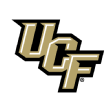
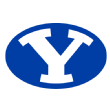
Dec. 22: UCF vs. BYU (RoofClaim.com Boca Raton Bowl, 7 p.m. ET on ESPN and the ESPN App)
If you've read anything I've written in the past 10 years or so, you probably knew this would be on the list. UCF is nearly as good as it has been for most of the past four years but has lost seven of its past eight one-score finishes, and this is the best BYU team since at least 1996, maybe 1985. This one's going to have some plot twists. It will also quite possibly be our last chance to watch quarterback Zach Wilson in a BYU uniform.
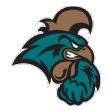
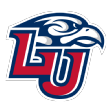
Dec. 26: Coastal Carolina vs. Liberty (Cure Bowl, noon ET on ESPN and the ESPN App)
Putting the disappointment of Coastal getting passed over for a major bowl bid aside, this is a pretty good consolation. Liberty's only loss was by one point to 8-3 NC State, and both the Flames and Chanticleers combine attractive, unique offenses with aggressive-as-heck defensive fronts. (Their color schemes are also both great.) If you're simply looking for 3.5 pleasant hours of football, this might be the safest bet on the bowl schedule.
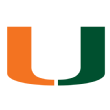
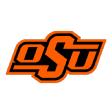
Dec. 29: Miami vs. Oklahoma State (Cheez-It Bowl, 5:30 p.m. ET on ESPN and the ESPN App)
First, this bowl gives me a reason to think and talk about one of the most momentous coaching changes in college football history -- when Howard Schnellenberger left his budding Miami dynasty for a shot in the soon-to-be-doomed USFL, and Oklahoma State's Jimmy Johnson replaced him and added to The U's dominance. But it's also a game between two programs that finished their respective seasons in disappointing fashion (Miami getting its doors blown off by UNC, OSU stumbling after a 4-0 start) and have plenty to play for.

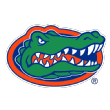
Dec. 30: Oklahoma vs. Florida (Goodyear Cotton Bowl Classic, 8 p.m. ET on ESPN and the ESPN App)
Granted, the Gators' Kyle Pitts has opted out -- his brilliant SEC championship game performance against Alabama (seven catches, 129 yards, one touchdown) was officially the last game for one of the best college tight ends we've ever seen. But this game is a fun rematch of 2008's BCS Championship and is still loaded with offensive firepower. It will give OU a chance to fully prove just how far its defense has come in 2020, and it will give us a chance to properly evaluate the Sooners' capabilities heading into 2021.
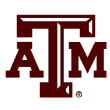
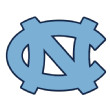
Jan. 2: Texas A&M vs. North Carolina (Capital One Orange Bowl, 8 p.m. ET on ESPN and the ESPN App)
Former Texas head coach Mack Brown versus the Aggies? This counts as a rivalry game, right? Regardless, this is a lovely styles-make-fights contest. A&M's defense made excellent strides over the course of the season, and playing against Sam Howell and the UNC attack is the ultimate "are you elite?" test. Elite defenses can snuff out the Tar Heels attack; anything less and you'll give up 40-plus points.
Four more random thoughts
1. Steve Sarkisian, master playcalling troll
One of my favorite activities of this cursed 2020 season has been watching all the different ways Alabama offensive coordinator Steve Sarkisian finds to mess with defenders', and probably defensive coordinators', heads.
He notes every defensive assumption about the RPO game and builds fakes off them (and a spectacular offensive line gives those fakes time to work). And in Saturday's SEC championship, he and the Tide stole points while damn near trolling the Florida defense. They randomly went into hurry-up mode to catch Florida with 12 players on the field. They ran a tight-end sneak in a short-yardage situation. They had a different tight end running a jet sweep (albeit unsuccessfully). They not only lined up star running back Najee Harris wide and threw him the ball but also had him running double moves into wide-open spaces.
Each year moves us closer to a positionless future, where skill corps guys are used in every possible way. Yes, it helps to have a spectacular offensive line and what might be three of the top five finishers in the Heisman voting (quarterback Mac Jones, Harris and receiver DeVonta Smith), but Sark is speeding our ascent toward that future. And with Alabama's defense struggling for the first time in more than two months, his nearly perfect offense saved Bama's perfect season.
2. Tulsa is just a nasty, nasty football team
Tulsa played eight games this season. Six were decided by single digits, four of its last five by six or fewer points. The Golden Hurricane offense could have stood to show up more consistently, but the defense was one of the most exciting in college football.
Despite games against Cincinnati, UCF, SMU and Oklahoma State, among others, Tulsa finished 11th in success rate allowed and ninth in marginal explosiveness allowed (my measure of the magnitude of an offense's successful plays, adjusted for field position). Here are the teams that finished in the top 15 in both measures: Cincinnati, Tulsa, West Virginia. That's it.
Even if you beat Tulsa this year -- and only two teams got the pleasure -- this was maybe one of the least enjoyable teams in the country to play. The Golden Hurricane hit hard; they swallow up whatever you try to do; and players such as linebacker Zaven Collins and end Jaxon Player would have had a spot in the rotation of any defense in the country. Head coach Philip Montgomery was hired at TU because of his offensive prowess, but as opponents have adapted to his and others' versions of the spread, his own defense, led by future power conference defensive coordinator Joseph Gillespie for the past two years, has adapted even more. His 3-3-5 is unique and frustrating, and watching Cincinnati try to move the ball against Tulsa in cold and soggy weather was miserable ... in all the right, football-related ways.
3. So many partial impressions
We spent quite a bit of time in recent weeks arguing about how many games different teams played and how much of a difference that should make in playoff consideration. I never really enjoyed that argument much -- punishing teams because of decisions their presidents made while flying blind (and refusing to work together) in a pandemic seems unfair for any number of reasons -- but quantity mattered in another way: We just didn't get much of an impression of certain teams.
That's particularly true of teams in the MAC, MWC and Pac-12. Ohio was interesting and fun ... and played three games. Colorado State's first defense under Chuck Heater was aggressive and efficient and done after four games. Arizona State's run game was fantastic and explosive (Rachaad White and DeaMonte Trayanum combined for 7.8 yards per carry), quarterback Jayden Daniels continued to show promise, and the Sun Devils finished at 2-2. Colorado played inspired ball and nearly finished unbeaten ... and the Alamo Bowl will be the Buffaloes' sixth and final game of the year.
UCLA and USC ... Washington and Wazzu ... Kent State and Miami (Ohio) ... hell, SJSU and Boise State ... we got only partial impressions of so many potentially interesting teams, and that's just a shame. It goes without saying that this is about the 31,148th most important repercussion of this pandemic, but it's on the list, at least. And speaking of ...
4. Every "[Team] opts out of bowl" announcement made me sad
Holding a bowl in a pandemic, with all the added risks and logistical nightmares involved, sounds extremely difficult. That a lot of them were canceled made perfect sense.
Playing in a bowl in a pandemic, with all the aforementioned risks and logistics, and holding off on seeing your family or letting this season mercifully end for a couple of more weeks, sounds even more difficult. That a lot of teams and players voted to end their seasons bowl-free also made perfect sense.
Every time a cancellation or opt-out came across the Twitter timeline, however, it made me sad. A bowl is supposed to be a celebration of a good -- or at least decent -- season, a reward for all the work and time and effort that goes into even finishing .500. That far fewer teams than normal will be playing in bowls this year, and that we had to basically open bowls up to all comers to even get the bowls we got, is a reminder of just how impossibly hard this season was for everyone involved, players and coaches and operations staffs most of all. I commend them for getting through it. They've earned some rest and family time. Hopefully we all come back recharged for a fun, full and fans-in-the-stands campaign in 2021.
We deserve better
"There is a place in college football for this kind of champion to have more to play for in our sport's future." -- Fox Sports' Tim Brando, after San Jose State's MWC championship win over Boise State, quite possibly the biggest win in school history.
Coastal Carolina will play Liberty in the Cure Bowl. San Jose State will play MAC champion Ball State in the Arizona Bowl. These are reasonably exciting matchups and will give both schools chances at unbeaten finishes and the highest final rankings in their respective histories. In this season of frustration and fatigue, both the Chanticleers and Spartans provided college football with some desperately needed positivity and excitement. And like Cincinnati, they both deserved better from college football than the bowls they got.
This season isn't completely over yet, but it's hard not to look to the horizon.
A pair of U.S. senators introduced a College Athlete Bill of Rights last week, which proposes athlete-friendly measures including a liberal NIL (name, image and likeness) policy, group licensing capabilities, a medical trust fund that should have been in place since the start of college athletics, removal of transfer penalties and even a revenue-sharing policy that would severely change how athletic departments operate.
We don't know whether it will pass, or what an altered version that will pass looks like, but we know that, one way or another, NIL and transfer policy changes are coming down the pike.
That's not the only change people are talking about these days.
After the sport's disastrous display of disunity in the scheduling and decision-making processes leading to the 2020 season, many of the sport's higher-ups, including Alabama's Nick Saban, have once again called for the creation of a college football commissioner's office. (I have a candidate to humbly nominate, ahem.) The Knight Commission, meanwhile, recommended that the FBS level of college football split entirely from the NCAA.
College football could be operating from a different leadership structure at some point, but whether any big changes come to pass, I hope that increasing dissatisfaction leads to changes to the actual process of playing a season. And I hope that, for once, they are changes that don't just reinforce the current balance of power. Odds are very good fans will return to the stands next year, that we'll get our full schedules and full slates of rivalry games, and these slivers of normalcy will all feel absolutely amazing. But we should still hope for change.
Even for those of us who didn't see or care to acknowledge them before now, 2020 both shined a light on all of the cracks in this sport's infrastructure and highlighted all the ways this sport could be even better. We know we can be much more flexible and creative with our scheduling (and, as BYU-Coastal taught us, we know viewers will jump aboard a good bandwagon story). We know we can play on-campus home games in mid-December (as would likely be required of an expanded playoff).
Basically: We know we can make this sport both more inclusive and more fun. College football prints cash even when we know that half of FBS has no chance and that our journey is going to end with Alabama-Clemson more often than not. Now imagine how much healthier this sport could become.
Imagine a world in which student-athletes can make money off their name, image and likeness and play knowing their long-term health is valued and compensated. Imagine getting our EA Sports video game back.
Imagine an eight-team playoff that had us preparing for Oregon at Alabama, Texas A&M at Notre Dame, Oklahoma at Ohio State and Cincinnati at Clemson this coming week?
Hell, imagine a 16-team playoff that welcomes any conference champions in the CFP top 25? Celebrating San Jose State for a week as it prepares for a matchup against No. 2 Clemson? Digging our teeth into No. 10 Iowa State at No. 7 Florida and No. 11 Indiana at No. 6 Oklahoma? Think about the number of fan bases that would be thrilled and fully engaged right now. Think of the journey such a playoff would entail, even if the destination were still Bama-Clemson.
No matter what change comes, the best part of college football will remain the football itself. It has succeeded despite, not because of, all the other stuff. The best part of college football is Ole Miss and LSU fighting their guts out, as they did on Saturday evening, in a driving rainstorm with nothing to play for and a lot of their best players having opted out. The best part is Stanford and UCLA doing the same thing 1,800 miles away (albeit in better weather).
We'll always get those moments and those games, whether we deserve them or not. More engagement, more honor and more fun would only add to the enjoyment.
This sport has seduced us all. And it could be so, so much better. It appears change of some sort is coming one way or another. Err on the side of care, inclusiveness and fun, and watch what happens.
1. Steve Sarkisian, master playcalling troll
One of my favorite activities of this cursed 2020 season has been watching all the different ways Alabama offensive coordinator Steve Sarkisian finds to mess with defenders', and probably defensive coordinators', heads.
He notes every defensive assumption about the RPO game and builds fakes off them (and a spectacular offensive line gives those fakes time to work). And in Saturday's SEC championship, he and the Tide stole points while damn near trolling the Florida defense. They randomly went into hurry-up mode to catch Florida with 12 players on the field. They ran a tight-end sneak in a short-yardage situation. They had a different tight end running a jet sweep (albeit unsuccessfully). They not only lined up star running back Najee Harris wide and threw him the ball but also had him running double moves into wide-open spaces.
Each year moves us closer to a positionless future, where skill corps guys are used in every possible way. Yes, it helps to have a spectacular offensive line and what might be three of the top five finishers in the Heisman voting (quarterback Mac Jones, Harris and receiver DeVonta Smith), but Sark is speeding our ascent toward that future. And with Alabama's defense struggling for the first time in more than two months, his nearly perfect offense saved Bama's perfect season.
2. Tulsa is just a nasty, nasty football team
Tulsa played eight games this season. Six were decided by single digits, four of its last five by six or fewer points. The Golden Hurricane offense could have stood to show up more consistently, but the defense was one of the most exciting in college football.
Despite games against Cincinnati, UCF, SMU and Oklahoma State, among others, Tulsa finished 11th in success rate allowed and ninth in marginal explosiveness allowed (my measure of the magnitude of an offense's successful plays, adjusted for field position). Here are the teams that finished in the top 15 in both measures: Cincinnati, Tulsa, West Virginia. That's it.
Even if you beat Tulsa this year -- and only two teams got the pleasure -- this was maybe one of the least enjoyable teams in the country to play. The Golden Hurricane hit hard; they swallow up whatever you try to do; and players such as linebacker Zaven Collins and end Jaxon Player would have had a spot in the rotation of any defense in the country. Head coach Philip Montgomery was hired at TU because of his offensive prowess, but as opponents have adapted to his and others' versions of the spread, his own defense, led by future power conference defensive coordinator Joseph Gillespie for the past two years, has adapted even more. His 3-3-5 is unique and frustrating, and watching Cincinnati try to move the ball against Tulsa in cold and soggy weather was miserable ... in all the right, football-related ways.
3. So many partial impressions
We spent quite a bit of time in recent weeks arguing about how many games different teams played and how much of a difference that should make in playoff consideration. I never really enjoyed that argument much -- punishing teams because of decisions their presidents made while flying blind (and refusing to work together) in a pandemic seems unfair for any number of reasons -- but quantity mattered in another way: We just didn't get much of an impression of certain teams.
That's particularly true of teams in the MAC, MWC and Pac-12. Ohio was interesting and fun ... and played three games. Colorado State's first defense under Chuck Heater was aggressive and efficient and done after four games. Arizona State's run game was fantastic and explosive (Rachaad White and DeaMonte Trayanum combined for 7.8 yards per carry), quarterback Jayden Daniels continued to show promise, and the Sun Devils finished at 2-2. Colorado played inspired ball and nearly finished unbeaten ... and the Alamo Bowl will be the Buffaloes' sixth and final game of the year.
UCLA and USC ... Washington and Wazzu ... Kent State and Miami (Ohio) ... hell, SJSU and Boise State ... we got only partial impressions of so many potentially interesting teams, and that's just a shame. It goes without saying that this is about the 31,148th most important repercussion of this pandemic, but it's on the list, at least. And speaking of ...
4. Every "[Team] opts out of bowl" announcement made me sad
Holding a bowl in a pandemic, with all the added risks and logistical nightmares involved, sounds extremely difficult. That a lot of them were canceled made perfect sense.
Playing in a bowl in a pandemic, with all the aforementioned risks and logistics, and holding off on seeing your family or letting this season mercifully end for a couple of more weeks, sounds even more difficult. That a lot of teams and players voted to end their seasons bowl-free also made perfect sense.
Every time a cancellation or opt-out came across the Twitter timeline, however, it made me sad. A bowl is supposed to be a celebration of a good -- or at least decent -- season, a reward for all the work and time and effort that goes into even finishing .500. That far fewer teams than normal will be playing in bowls this year, and that we had to basically open bowls up to all comers to even get the bowls we got, is a reminder of just how impossibly hard this season was for everyone involved, players and coaches and operations staffs most of all. I commend them for getting through it. They've earned some rest and family time. Hopefully we all come back recharged for a fun, full and fans-in-the-stands campaign in 2021.
We deserve better
"There is a place in college football for this kind of champion to have more to play for in our sport's future." -- Fox Sports' Tim Brando, after San Jose State's MWC championship win over Boise State, quite possibly the biggest win in school history.
Coastal Carolina will play Liberty in the Cure Bowl. San Jose State will play MAC champion Ball State in the Arizona Bowl. These are reasonably exciting matchups and will give both schools chances at unbeaten finishes and the highest final rankings in their respective histories. In this season of frustration and fatigue, both the Chanticleers and Spartans provided college football with some desperately needed positivity and excitement. And like Cincinnati, they both deserved better from college football than the bowls they got.
This season isn't completely over yet, but it's hard not to look to the horizon.
A pair of U.S. senators introduced a College Athlete Bill of Rights last week, which proposes athlete-friendly measures including a liberal NIL (name, image and likeness) policy, group licensing capabilities, a medical trust fund that should have been in place since the start of college athletics, removal of transfer penalties and even a revenue-sharing policy that would severely change how athletic departments operate.
We don't know whether it will pass, or what an altered version that will pass looks like, but we know that, one way or another, NIL and transfer policy changes are coming down the pike.
That's not the only change people are talking about these days.
After the sport's disastrous display of disunity in the scheduling and decision-making processes leading to the 2020 season, many of the sport's higher-ups, including Alabama's Nick Saban, have once again called for the creation of a college football commissioner's office. (I have a candidate to humbly nominate, ahem.) The Knight Commission, meanwhile, recommended that the FBS level of college football split entirely from the NCAA.
College football could be operating from a different leadership structure at some point, but whether any big changes come to pass, I hope that increasing dissatisfaction leads to changes to the actual process of playing a season. And I hope that, for once, they are changes that don't just reinforce the current balance of power. Odds are very good fans will return to the stands next year, that we'll get our full schedules and full slates of rivalry games, and these slivers of normalcy will all feel absolutely amazing. But we should still hope for change.
Even for those of us who didn't see or care to acknowledge them before now, 2020 both shined a light on all of the cracks in this sport's infrastructure and highlighted all the ways this sport could be even better. We know we can be much more flexible and creative with our scheduling (and, as BYU-Coastal taught us, we know viewers will jump aboard a good bandwagon story). We know we can play on-campus home games in mid-December (as would likely be required of an expanded playoff).
Basically: We know we can make this sport both more inclusive and more fun. College football prints cash even when we know that half of FBS has no chance and that our journey is going to end with Alabama-Clemson more often than not. Now imagine how much healthier this sport could become.
Imagine a world in which student-athletes can make money off their name, image and likeness and play knowing their long-term health is valued and compensated. Imagine getting our EA Sports video game back.
Imagine an eight-team playoff that had us preparing for Oregon at Alabama, Texas A&M at Notre Dame, Oklahoma at Ohio State and Cincinnati at Clemson this coming week?
Hell, imagine a 16-team playoff that welcomes any conference champions in the CFP top 25? Celebrating San Jose State for a week as it prepares for a matchup against No. 2 Clemson? Digging our teeth into No. 10 Iowa State at No. 7 Florida and No. 11 Indiana at No. 6 Oklahoma? Think about the number of fan bases that would be thrilled and fully engaged right now. Think of the journey such a playoff would entail, even if the destination were still Bama-Clemson.
No matter what change comes, the best part of college football will remain the football itself. It has succeeded despite, not because of, all the other stuff. The best part of college football is Ole Miss and LSU fighting their guts out, as they did on Saturday evening, in a driving rainstorm with nothing to play for and a lot of their best players having opted out. The best part is Stanford and UCLA doing the same thing 1,800 miles away (albeit in better weather).
We'll always get those moments and those games, whether we deserve them or not. More engagement, more honor and more fun would only add to the enjoyment.
This sport has seduced us all. And it could be so, so much better. It appears change of some sort is coming one way or another. Err on the side of care, inclusiveness and fun, and watch what happens.
Appreciate you famPosted this in the NBA observations thread:
https://www.thecoli.com/threads/random-nba-observations-2020-2021.819432/page-103#post-40279550
ReturnOfJudah
Veteran
Ranking all 28 teams that have made the College Football Playoff
The seventh College Football Playoff kicks off Friday, with No. 1 Alabama facing No. 4 Notre Dame in Arlington, Texas, and No. 2 Clemson battling No. 3 Ohio State in New Orleans. There are no debutants in this field; these four programs have combined for 18 of the 28 total CFP bids, in fact. But not every Tide, Tigers, Buckeyes or Irish team is a carbon copy of others (Notre Dame excluded, perhaps), and none of these programs fielded the greatest team of the CFP era.
To set the table for this CFP, let's see where this batch of teams fits among the others. Let's rank all 28 to date (and also the 10 best teams to miss the playoff).
I derived this list, as I usually do, through a combination of numbers and my own personal opinions. I started out by ordering teams according to their SP+ percentile ratings, then adjusted for actual CFP performance and any other criteria I felt like including. Since the four 2020 teams on the list obviously haven't played in the CFP yet, their rankings could, and likely will, change in the coming couple of weeks.
No. 28 to No. 15

28. 2015 Michigan State (12-2)
CFP result: lost to Alabama, 38-0
Mark Dantonio's 2015 Spartans are definitive proof that the committee is picking the four "most deserving" teams more than the "best"; MSU was definitively the former and in no way the latter. The Spartans finished 18th in FPI and 20th in SP+ but beat a dynamite Ohio State and outlasted unbeaten Iowa to win the Big Ten. Then they did exactly what was expected of them against Alabama in the Cotton Bowl: lost big.
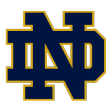
27. 2018 Notre Dame (12-1)
CFP result: lost to Clemson, 30-3
An unbeaten Power 5 (or power conference-adjacent) team will almost always make the CFP, and the Fighting Irish earned their spot with increasingly dominant wins over quality Michigan, Stanford and Syracuse teams. Their defense was solid and exciting (10th in defensive SP+), but their offensive limitations were made crystal clear when they had to face a peaking Clemson squad in the Cotton Bowl. The game was tied after one quarter, but it got much, much worse from there.

26. 2020 Notre Dame (10-1)
CFP result: ???
I spent two months telling you why I thought this Notre Dame team was different from the one that got blown out in the semifinals two years ago. But in a 34-10 ACC championship blowout loss to Clemson, the Irish found a way to turn back the clock, so to speak. They have a chance to right their wrong with a strong showing against Alabama -- rediscovering an elite pass rush wouldn't hurt -- but the burden of proof is theirs.

25. 2019 Oklahoma (12-2)
CFP result: lost to LSU, 63-28
After three years at No. 1, Lincoln Riley's Sooners ranked only third in offensive SP+, and the defense wasn't good enough to make up for this smidgen of offensive mortality. They rolled to 7-0 but stumbled against Kansas State and eked out four tight wins in their final five games. That was enough to earn the Sooners their fourth CFP appearance in five years, but they got destroyed in the Peach Bowl.
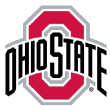
24. 2016 Ohio State (11-2)
CFP result: lost to Clemson, 31-0
After what might have been Urban Meyer's most talented Ohio State team missed the CFP in 2015, the most offensively limited one made it the next year. The Buckeyes ranked just 32nd in offensive SP+. And although their defense was able to hold Deshaun Watson and Clemson to just two touchdowns in the Tigers' first 10 drives, Ohio State couldn't mount a drive of even 30 yards until late in an embarrassing shutout loss.

23. 2015 Oklahoma (11-2)
CFP result: lost to Clemson, 37-17
Bob Stoops' Sooners headed into 2015 with a new offensive coordinator (Lincoln Riley) and a transfer quarterback (Baker Mayfield), and after a disappointing 2014, OU reignited. The Sooners won a loaded Big 12 and were 3.5-point favorites against Clemson in the Orange Bowl. They even took a 17-16 lead into halftime. Clemson shifted into fifth gear in the second half, however, and the Sooners would soon be relegated to Mostly Annual Semifinalist status.
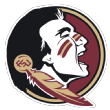
22. 2014 Florida State (13-1)
CFP result: lost to Oregon, 59-20
The Seminoles returned lots of key figures from their 2013 national title romp, but they had to eke out tight win after tight win -- seven one-score games in all. While the BCS would have given us a Bama-FSU title game that year, the CFP gave the Noles the No. 3 seed and sent them to the Rose Bowl, where a 34-0 Ducks run ended FSU's 29-game winning streak in stark fashion.

21. 2018 Oklahoma (12-2)
CFP result: lost to Alabama, 45-34
OU lost Baker Mayfield but somehow improved offensively. Kyler Murray threw for 4,361 yards and rushed for 1,001, and the Sooners topped 45 points 10 times. The defense, however, was dreck. Lincoln Riley fired coordinator Mike Stoops six games in, but the Sooners allowed 44 points per game over their final six contests and gave up 31 first-half points to Alabama in the Orange Bowl. That was too much for even Murray to overcome.

20. 2017 Clemson (12-2)
CFP result: lost to Alabama, 24-6
You know your program is in great shape when "transition year" means "only making the CFP semis." The Tigers boasted perhaps the best defense of the Dabo Swinney era, but Deshaun Watson was gone, and Trevor Lawrence wouldn't arrive in town for another year. Clemson was too good for the rest of the ACC -- upset loss to Syracuse aside -- but it gained just 188 yards against Alabama in the Sugar Bowl, bowing out slightly earlier than normal.

19. 2020 Ohio State (6-0)
CFP result: ???
Ryan Day's Buckeyes approach the finish line having only begun to show us their potential. They are led by star quarterback Justin Fields, cornerback Shaun Wade, excellent linebackers and an improving run game. But Fields is still in early-season form, and new defensive coordinator Kerry Coombs hasn't yet found his groove. Two more wins could vault them 15 spots or so; or they could go down as a team that simply never got a chance to find its rhythm.